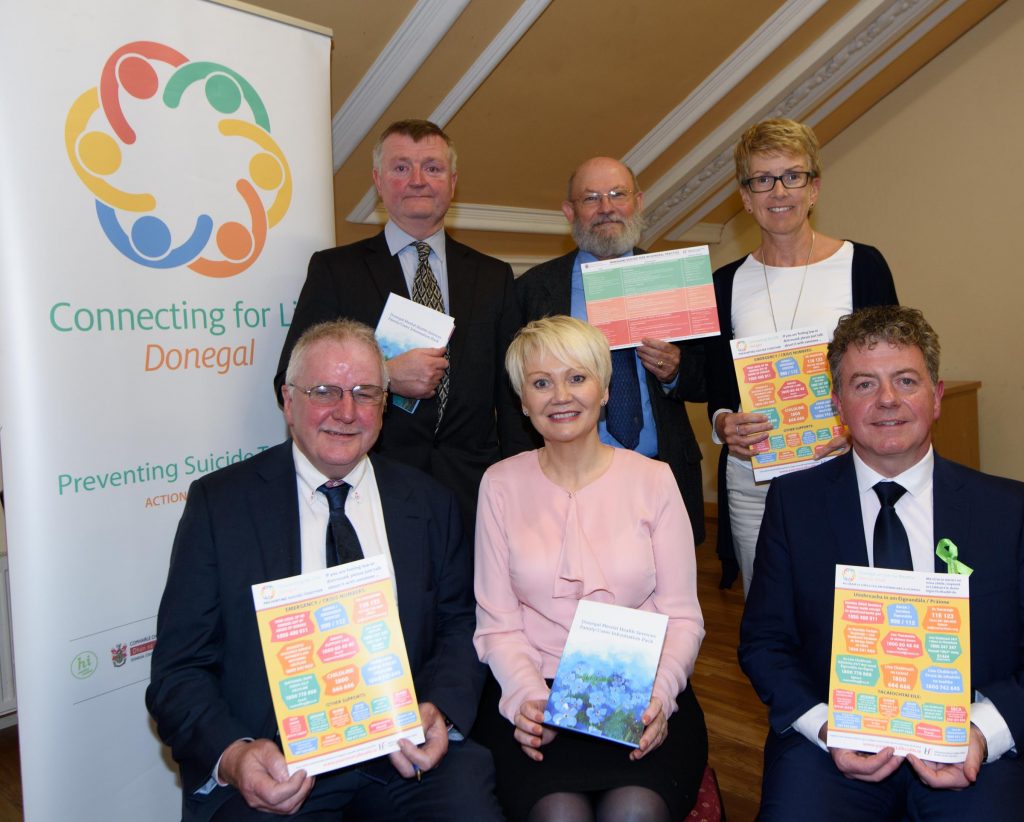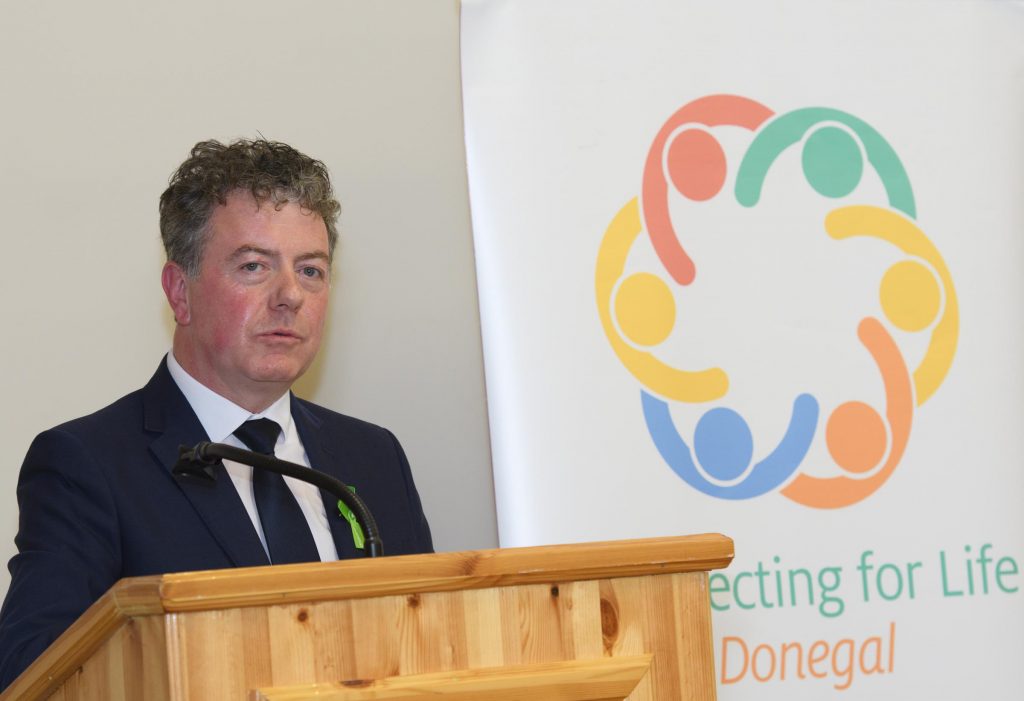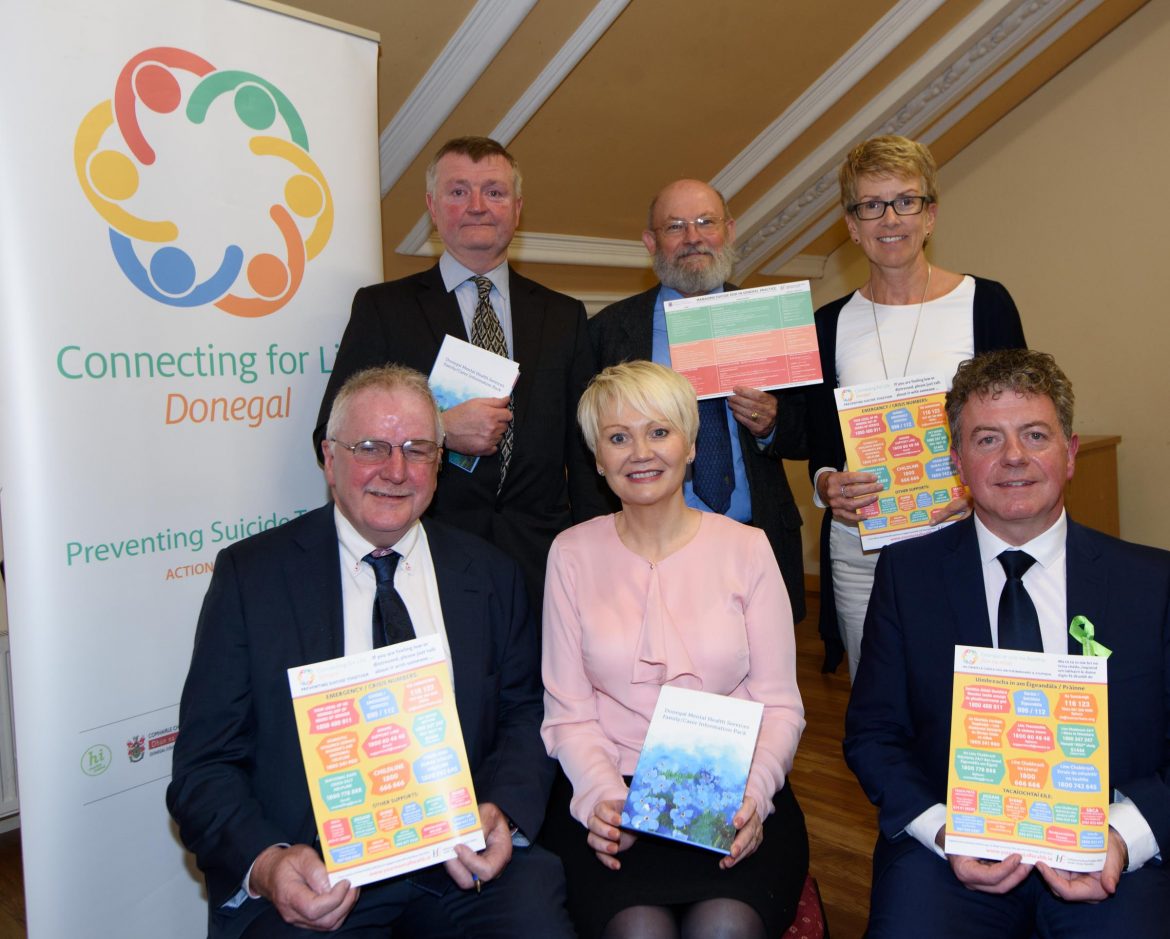Ireland’s suicide rate has stabilised since the recession and provisional data suggests a decreasing trend, according to the latest report by the HSE.
The report by the National Office for Suicide Prevention (NOSP) shows a high male to-female ratio in deaths by suicide over the years.
In 2014, 486 people died by suicide in Ireland. 399 (82.1%) of these were men.
The report gave a provisional total of 399 suicides in 2016. 318 of those deaths were male.
However, the average suicide rate in 2014-2016 in Donegal is 10.9, which is on a level figure to that of 2007-2009.
In 2014, for both males and females, the highest rates of suicide in Ireland were observed among 45-54 year-olds. The lowest rates of suicide were recorded among those aged 65 years and over.
As with the suicide rate, there was an increase in the self-harm rate in Ireland between 2007 and 2012, with a 19% increase overall during this period.
In 2016, the National Self-Harm Registry Ireland, which is funded by the HSE NOSP, recorded 11,485 presentations to hospital due to self-harm nationally, involving 8,909 individuals. This is in-line with 2015 figures.
There were successive decreases in the self-harm rate between 2011 and 2013, and essentially no change between 2013 and 2016. The rate in 2016 was still 10% higher than the pre-recession rate in 2007.
The role of the NOSP has changed considerably with the launch of Connecting for Life, Ireland’s National Strategy to Prevent Suicide, in 2015.

At the Connecting for Life Donegal launch are seated John Hayes, Chief Officer Community Health Service, Dr Collette Corry, Senior Research Psychologist NSRF and John Meehan, Director of the National office for Suicide Prevention . Back from left Cliff Hayley, clinical Director Donegal Mental Health Services , Dr. Paul Stewart, GP and Anne Sheridan, Mental Health Promotion and Suicide Resource Officer. Photo Clive Wasson
Connecting for Life Donegal was listed as a highlight in the progress of the project. Connecting for Life Donegal was launched in 2015.
The HSE’s National Director for Mental Health, Anne O’Connor explains: “There was an increase in the suicide rate in Ireland between 2007 and 2012 which can be wholly attributed to an increase in the male rate of suicide.
“Data from 2012 onwards indicates a levelling-off of this rise. Provisional data for 2015 and 2016 suggests a decreasing trend in Ireland’s suicide rate.

John Meehan, Director of the National Office for Suicide Prevention at Connecting for Life Donegal launches three new suicide prevention resources in the Vestry, St Conals, Letterkenny. Photo Clive Wasson
Newly appointed Assistant National Director for NOSP, John Meehan, says: “This downward trend is a step in the right direction but we must not forget that every death by suicide is a tragedy and has a devastating impact on families and the surrounding community.
“Our work in 2016 focused on trying to better understand suicide data and suicidal behaviour. We worked with the Health Research Board to assess the feasibility of collecting suicide information directly from Coroners’ files. This would give us more comprehensive data on suicide.
“I’m pleased to say that the feasibility study showed that it is technically, operationally and financially feasible to collect this data and I hope that we will be able to continue this important piece of work into the future.”
In 2016, through the HSE Mental Health Division, funding of more than €11.8 million was invested in suicide prevention. Fifty per cent of this budget was invested in frontline services and organisations working in the area of suicide prevention and mental health promotion.
Tags:







